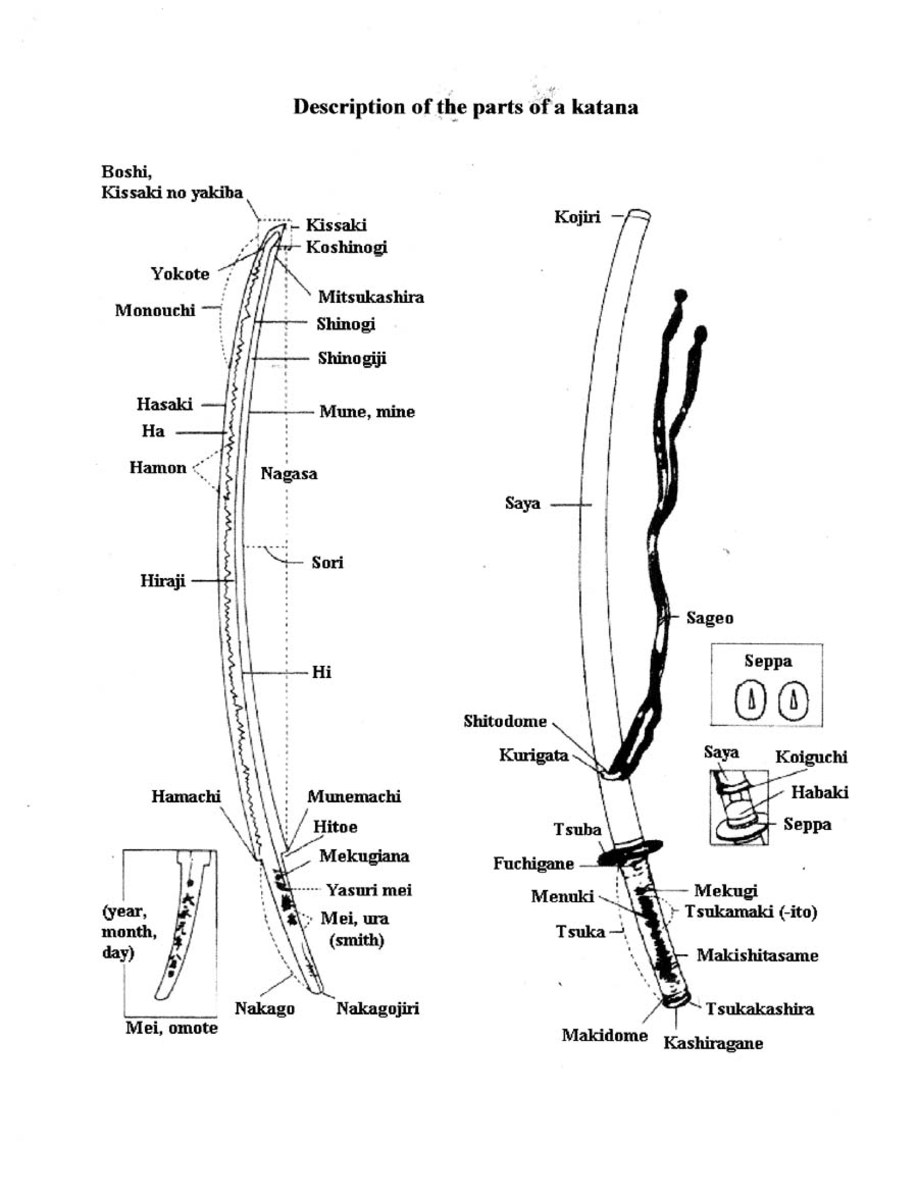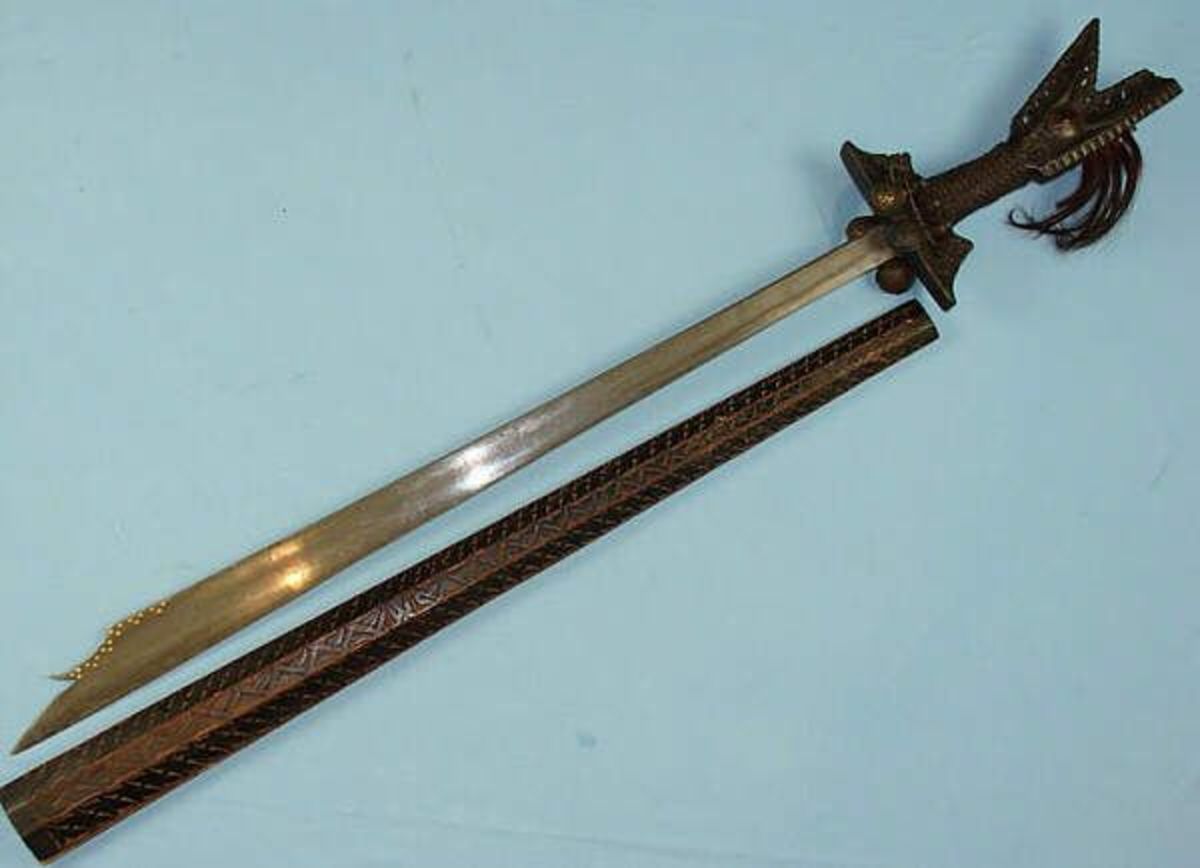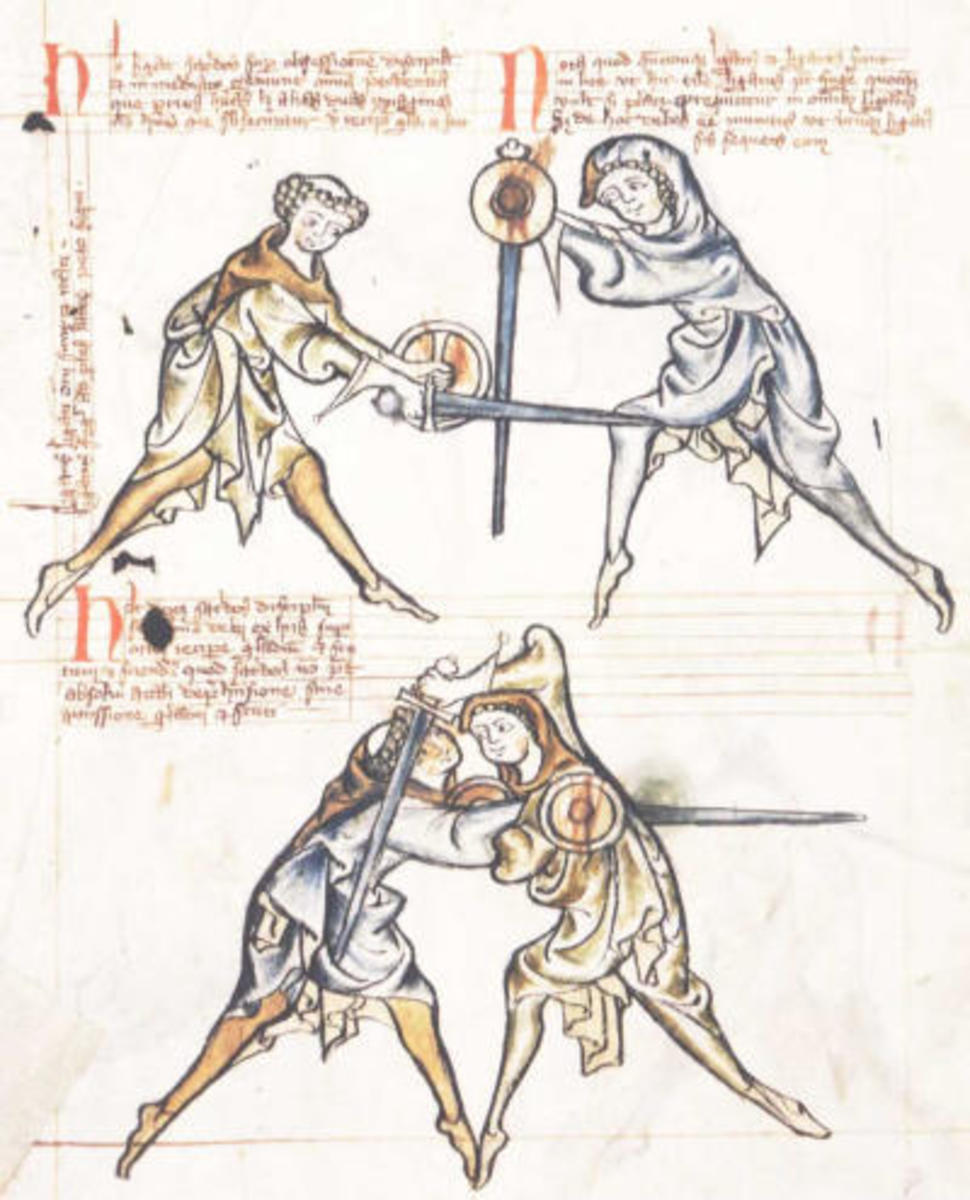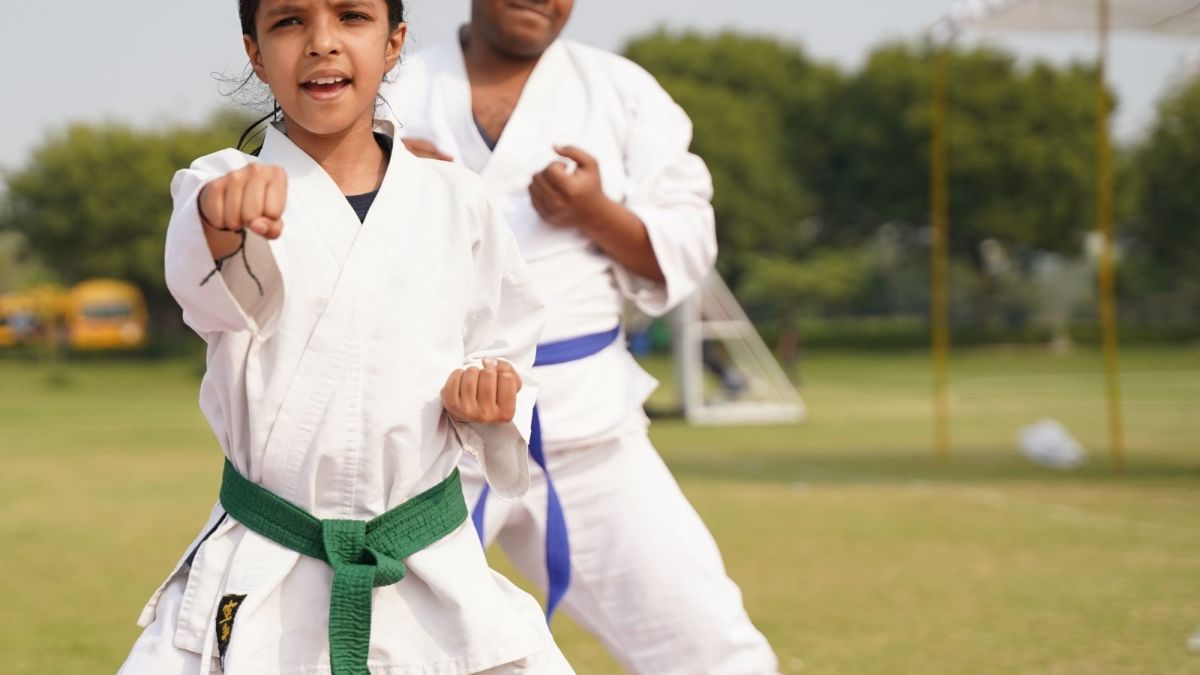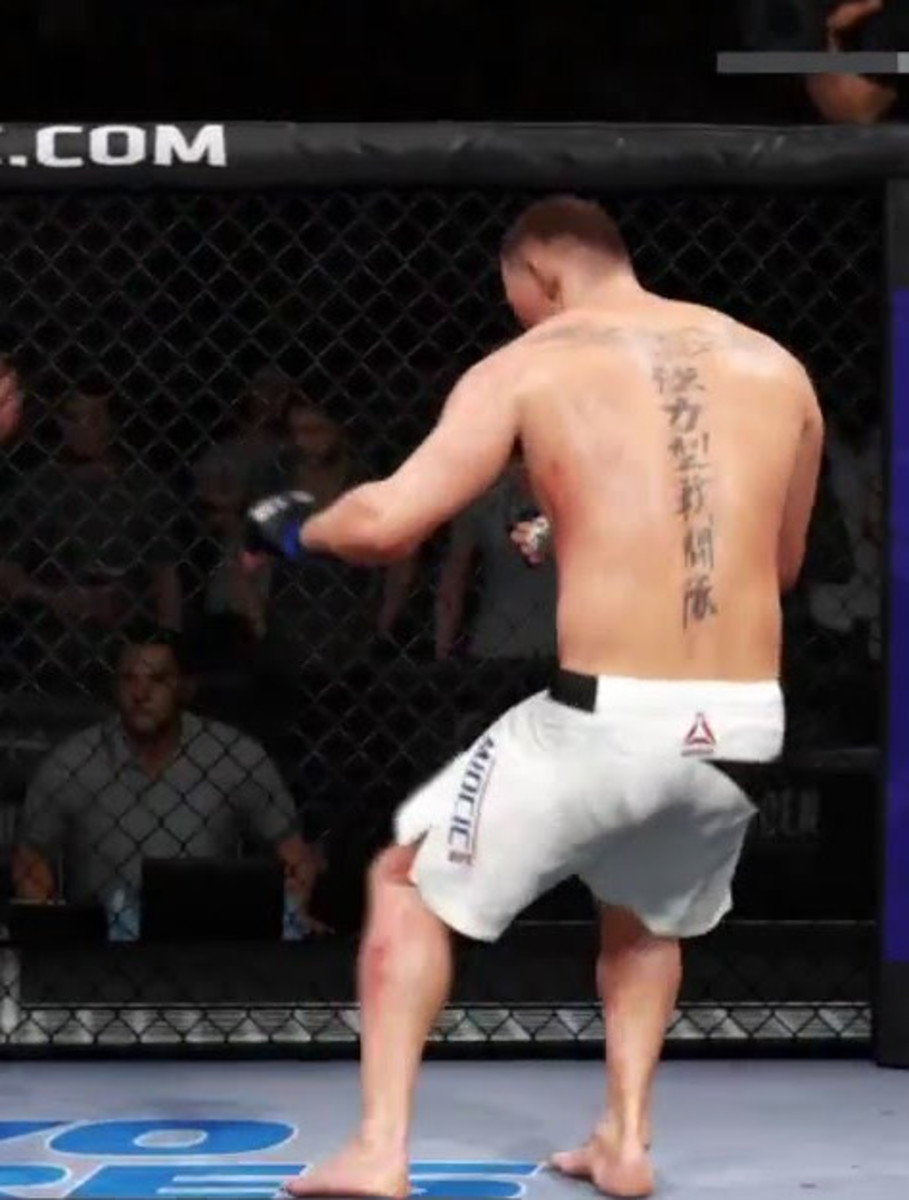Katanas Are Not Just Better: Misconceptions About the Samurai Sword
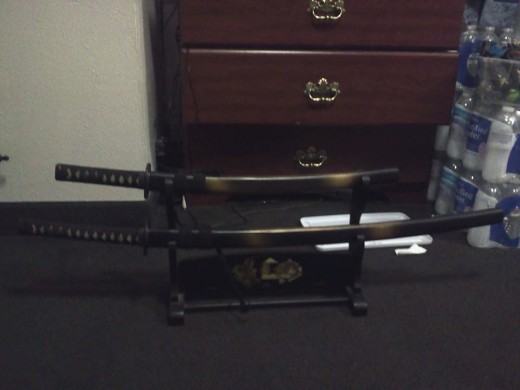
The katana. Legendary sword of the samurai warrior class of Japan. Absolute best sword ever. Can cut through another sword, a gun barrel, et cetera et cetera. We've heard all the hype and then some. Now, don't get me wrong, I love the katana, It's an awesome sword and the one I'm most familiar with using, but it's not without some pretty serious flaws. Here's what this sword is capable of and how it was/is used in combat.
What is the Katana?
The word 'katana' actually refers to any sword that has a blade length of at least 24 inches and generally less than 30 inches, but has no real upper limit. The katana as we know it today is specifically the modern, refined form of the uchigatana, the single-edged curved sword worn edge-up thrust through the left side of the obi. The whole sword, including mountings, is approximately 36 inches long in the standardized form. Custom-forged swords can vary in measurements, especially in the length of the hilt and relative curvature of the blade.
The katana, at least as we know it, first really started seeing use in the Muromachi period (1333 - 1467). Before that, warriors on the battlefield used the tachi, which was a somewhat longer and more curved sword designed for use from horseback. After the Mongol invasions in 1274 and 1281, the Japanese altered their fighting style from mounted archery to more infantry-based tactics. The Japanese feared the Mongolian armies would make a third attempt at invasion without a well-timed storm to stop them. They also came to understand that their individual, almost ritualized method of fighting couldn't stand up to the disciplined group focus of the Mongols, and the slender tachi would break on impact with thick leather armor. Because the katana was made shorter, less curved, and thicker, it was hardier than the tachi overall.
Composition
The katana consists of several types of steel that have been welded and folded into one another, giving the sword an ideal mixture of ductility and hardness so it can hold its edge and parry weapon blows. Granted, that's a serious oversimplification, but the whole process of smithing a katana warrants its own article. Anyway, raw Japanese iron and steel isn't of very high quality, so it takes weeks or months to forge what is basically pig iron into a finished product. That's why the katana is considered to be such a good sword; given quality control and the nigh-religious significance placed on Japanese swordsmithing, a properly-made katana is always the best sword it can be, given the raw materials. As an aside, the Japanese weren't the only ones to put such effort into their swords. The smiths of ancient Scandinavia produced some magnificent blades, but you don't hear much about them.
The steel traditionally used to forge a Japanese sword is called tamahagane, literally meaning 'jewel steel'. It is made of black iron sand and charcoal smelted in a clay oven. After the fire reaches the right temperature, the iron sand and charcoal are added a little at a time, allowing the mixture to heat evenly. The fire never gets hot enough to fully melt the mixture. When it cools, the smelters break the pieces apart with a hammer and separate it by the pieces containing different amounts of carbon, differentiating by appearance. Higher-carbon steel makes the core of the blade, and lower-carbon steel makes the edge. The folds make the metal mixture homogenous and get rid of impurities, voids, or anything that could compromise the blade. Ideally, the steel used in making a katana has about 1.5% carbon content.
Context and Use
The katana, for all it's thought to be the battlefield sword of the samurai, actually wasn't so much. Although it could be used in battle, it mainly functioned as a backup for when a warrior couldn't use his or her primary weapon (out of arrows/broken bow, too close-range for polearms, too damp for muskets/arquebuses). The tachi was the first sword in Japanese military history to serve as a primary weapon. Later, the no-dachi took its place.
It wasn't until the Edo period, after Japan had unified and recovered from the Warring States period, that the katana became synonymous with the samurai. Along with the shorter wakizashi, it served as an indicator of social status; only members of the warrior caste could legally carry the two swords. It wasn't always this way; in 1588, Toyotomi Hideyoshi instituted the Great Sword Hunt, confiscating all swords from non-nobility. Before this, anyone could own a sword.
Because there was little to no widespread warfare after Tokugawa Ieyasu became shogun, the katana became a weapon used in one-on-one duels. Because of etiquette and low ceilings, it was only worn outdoors; the wakizashi was worn indoors and outdoors.
Most styles of Japanese swordplay focus on five starting postures: seigan-gamae, jodan-gamae, gedan-gamae, hasso-gamae, and waki-gamae. Most schools have their own versions of these stances.
Seigan-gamae: This is the core stance of most Japanese sword styles. The swordsman stands with his right foot pointed forward, the left foot pointed outward at an angle (more modern styles have the feet parallel). The sword is held directly in front of the body, with the blade pointing upward at about 30 degrees at the opponent's throat or eyes. Not too many direct attacks can be made from this stance, except for a thrust or a draw-cut. Those can be effective openers, if you can pull them off.
Jodan-gamae: The main "attack" stance in many schools. The left foot is forward, and the sword is held above the head pointed backward poised to strike downward or from either diagonal. Because both hands are on the sword (barring the presence of an off-hand weapon such as the wakizashi), the entire body below the head is left unprotected. The main purpose of this stance is psychological. Various traditions make mention of 'warrior spirit' that comes more effectively when taking this stance. I won't get into that, but looking at the purely physical aspect shows a pretty easy opening.
Gedan-gamae: This is a counter-oriented posture. Foot position is the same as seigan, but the sword is pointed at the enemy's knees or feet. Because the entire torso and head are left unguarded, it's an invitation for attack. While this seems like the same weakness of jodan, the sword is still in front of the body; all the swordsman has to do is lift the blade.
Hasso-gamae: An alternative to jodan. Rather than being above the head, the sword is above the right shoulder, but can be taken on the left side. From here, it can move easily between seigan and jodan as the occasion requires.
Waki-gamae: This is a bit of an odd one. The sword is held at the right side pointed backward behind the swordsman, and the feet are placed more widely apart. Like hasso, it can be taken right or left. In this posture, it's impossible for the enemy to see where the sword is or what it's doing until it's already in motion. However, because of its location it cannot defend and movement is harder.
The katana cuts with a primarily slicing motion, rather than pure cleaving force. The swordsman brings the sword around in a wide arc by straightening his arms, then snapping his wrists outward to bring the sword to full extension just before the blade contacts the target.. The natural motion of the arms brings the sword back inward, creating the slice. In addition, he steps and twists his hips to provide extra momentum. All of these factors, when done correctly, lead to a powerful, precise cut.
Modern schools of swordsmanship tend to focus on direct downward cuts. Samurai in duels or on the battlefield would be more likely to use diagonal cuts that would strike the area between the neck and shoulder rather than the crown of the head. For one thing, the helmet would shunt the sword away. For another, a downward cut, while relatively simple, is also easier to avoid because it only travels along one axis.
Weaknesses
Blade Strength/Durability
The katana's strength is also arguably its weakness: it has an insanely sharp and hard edge. As I mentioned elsewhere, a hard edge is also brittle and will not stand up to much edge-to-edge contact. This means the swordsman using the katana has to be extra-careful to use the shinogi to ward off blows. One good edge strike against armor or another sword and the katana is likely history or at least no longer in fighting condition. European swords, by contrast, aren't quite as sharp - though not dull by any means - but they are made of more resilient metals.
Pointing Guards
Two of the three main kamae in Japanese swordplay are what we call pointing guards. Seigan and gedan explicitly point at the enemy in some fashion, which doesn't lend itself well to using the cutting ability the katana is most known for because the sword has to be pulled back for a blow. Not only that, but a pointing guard makes it relatively easy to displace the sword and close the distance before the katana can be brought back into the fight.
Overspecialization
The katana does one thing remarkably well, and that is cutting via shearing force as opposed to just using momentum to make the blade into a finely-honed wedge. The sword has a point, but thrusting isn't the primary strength of the blade. Its curvature doesn't make thrusting an ideal maneuver. Straight swords work well for both types of attacks. Also, the katana only has one edge; should one cut miss, the swordsman has to twist the sword around and reverse his cut, which can cost critical milliseconds
Summing Up
The katana is an excellent sword for its purpose, but it's not in any way the perfect close-combat weapon. Its design and use are overspecialized to slashing draw cuts that, while effective against unarmored opponents, don't allow a lot of techniques that don't involve the sword's edge. Although the edge of a samurai sword has some serious bite, a sword that is slightly duller is just as effective in the end.

